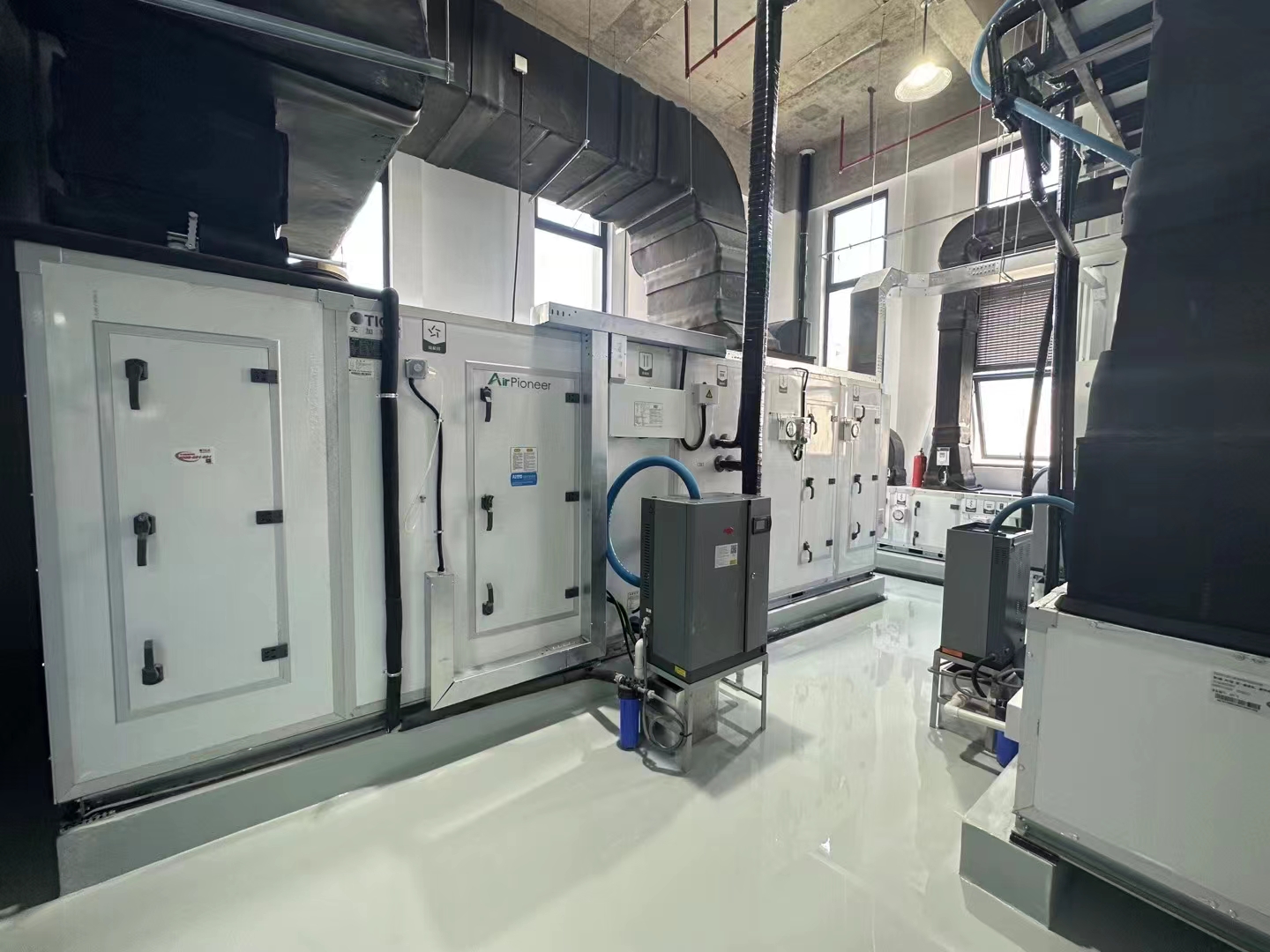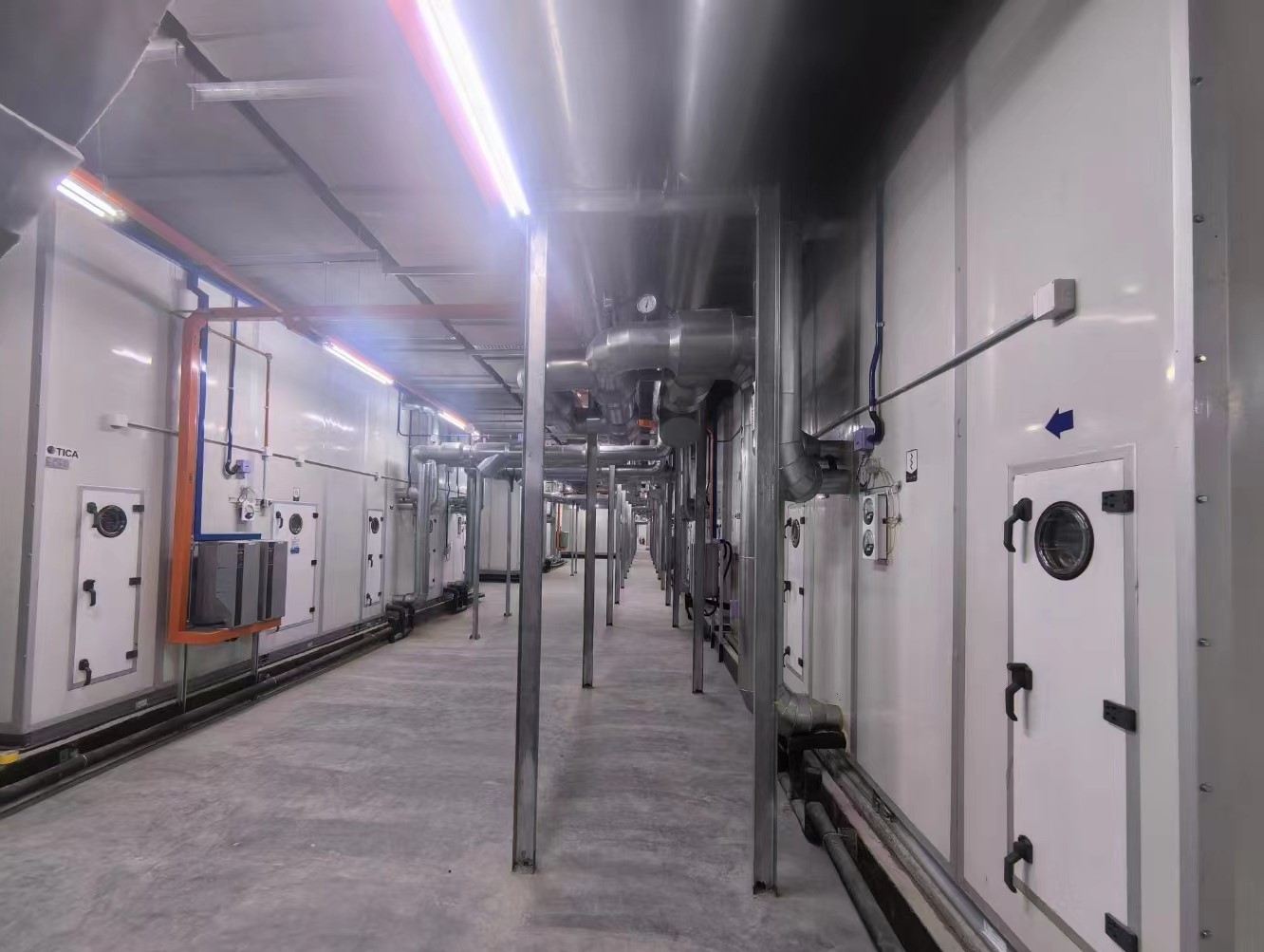

Fire prevention requirements for air ducts in cleanroom (clean room) need to comprehensively consider fire resistance, cleanliness, corrosion resistance and industry-specific standards. The following are key points:
1. Fire prevention grade requirements
Non-combustible materials: Air ducts and insulation materials should preferably use non-combustible materials (Grade A), such as galvanized steel plates, stainless steel plates, etc., in accordance with GB 50016 "Code for Fire Prevention of Building Design" and GB 50738 "Code for Construction of Ventilation and Air Conditioning Engineering".
Fire resistance limit: Smoke and exhaust system: It must meet GB 51251 "Technical Standards for Smoke and Exhaust Systems in Buildings", and the fire resistance limit is usually required to be ≥0.5~1.0 hours (depending on the specific area).
Ordinary air ducts: Air ducts in non-smoke and exhaust systems can use B1-level flame-retardant materials, but the cleanrooms are recommended to be upgraded to Grade A to reduce fire risks.
2. Common material selection
Metal air ducts
Galvanized steel plate: economical and practical, requires uniform coating and sealing treatment at the joints (such as welding or fireproof sealant).
Stainless steel plate: used in highly corrosive environments (such as medicine and electronics industries), with excellent fireproof performance. Non-metal air ducts
Phenolic composite duct: must pass B1 level test and provide fireproof test report, and be used with caution in high temperature areas.
Fiberglass duct: requires adding fireproof coating to ensure no dust generation and meet cleanliness requirements.
3. Special requirements
Smoke exhaust system: must use independent air ducts, metal materials and fireproof coating (such as rock wool + fireproof panel) to meet the fire resistance limit.
Clean room additional conditions: The material surface should be smooth and dust-free, and avoid using fireproof coatings that are easy to shed particles. The joints need to be sealed (such as silicone seals) to prevent air leakage and fire isolation.
4. Relevant standards and specifications
GB 50243 "Quality Acceptance Code for Construction of Ventilation and Air Conditioning Engineering": Test method for fire resistance performance of air ducts.
GB 51110 "Cleanroom Construction and Quality Acceptance Specifications": Dual standards for fire prevention and cleanliness of cleanroom air ducts.
Industry standards: Electronic factories (such as SEMI S2) and the pharmaceutical industry (GMP) may have higher requirements for materials.
5. Construction precautions Insulation materials: Use Class A (such as rock wool, glass wool), and do not use combustible foam plastics.
Fire dampers: Set when crossing fire partitions or machine room partitions, the operating temperature is usually 70℃/280℃.
Testing and certification: Materials must provide a national fire inspection report (such as a CNAS accredited laboratory). The air ducts in cleanroom should be mainly made of metal, with a fire protection level not lower than Class A, taking into account both sealing and corrosion resistance. When designing, it is necessary to combine specific industry standards (such as electronics, medicine) and fire protection specifications to ensure that the system safety and cleanliness meet the standards.
Post time: Jul-15-2025

